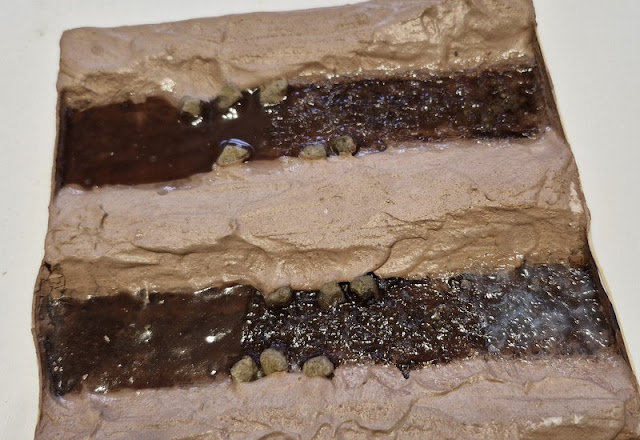I can't believe the last update on the tanker wagons was in May. Progress has been a bit intermittent. While sourcing some suitable transfers I finished the painting. The wagon chassis were painted grey, as usual for my freight stock, with black underframes. The round tank got sprayed with a red aerosol I had in the garage, I picked out pipes and valve/filler caps in metallic aluminium. The square tanks were painted off-black, as were strapping and other details. I'm not sure whether to paint the weedkiller pipes in a more visible colour?
I decided on Woodland Scenics/Model Graphics rub-down white gothic lettering. This provides a range of sizes, which was useful as I wasn't quite sure what size to use, and I thought rub-down lettering might be easier given I've not used transfers since my teens. I printed out the wording in the nearest font I could match at a range of sizes, decided which size would fit the wagons best, then found the nearest size on the transfer sheet.
Before starting on the tank wagons I used an old Colin Ashby wagon as a practice run, lettering it for loco coal. I found the transfers easy to apply, but tricky to line up, especially if handling the whole sheet and where there is uneven detail. So, I decided the cut out each letter and align and space them onto a piece of masking tape, before transferring (ahem) to the model. Of course, this had to be done upside-down, I put a length of tape half onto a steel rule and flipped it over then placed the lettering on face down and back-to-front.
The tape was then peeled off the ruler and lined up on the model, ensuring the lettering is straight and positioned correctly, before rubbing the lettering down with a pencil.
The same technique was used for the round tank, this time I used one of the printouts to help get the right spacing - albeit in mirror! Positioning the right letters in the right order and the right way round when they are upside-down and back-to-front takes some concentration...
The tank was still attached to the coffee stirrer used for holding it for painting, so I taped that to the edge of a block of wood to hold the tank on its side. The ruler was flipped and positioned with the letters along the centre of the tank, and a second strip of tape used to hold the top of the letters in place. With everything checked for alignment, the letters were rubbed down and the backing sheet removed one by one.
And here's the result. The lettering gives purpose to the wagons, and should help make them stand out in Loctern Quay's shunting puzzle.
I've refitted the wheels and couplings to the tank wagons, these are now just awaiting weathering, and of course picture cards for the shunting puzzle. I'm sure I put the wheels from the open wagon somewhere safe... when I find them it could get added to the fleet, though it has already served its purpose as a practice for the lettering.















